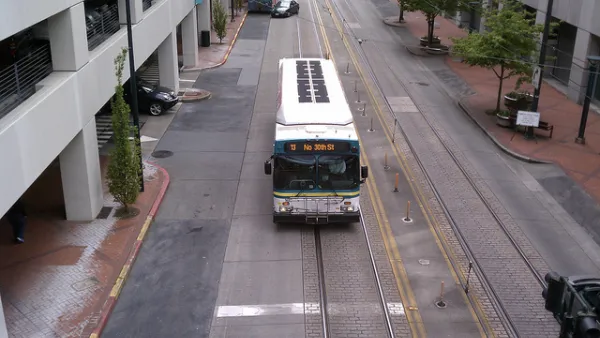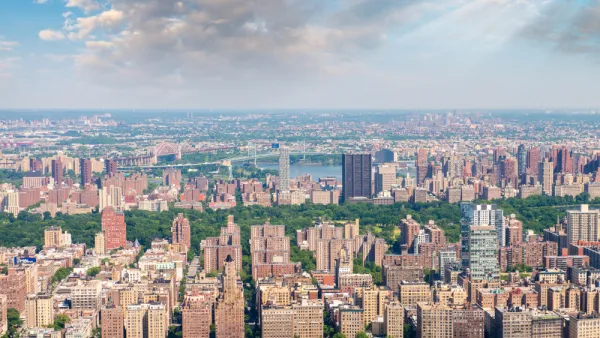A new report details the trend of jobs densification in U.S. metropolitan areas between 2004 and 2015, finding a few large metropolitan areas leading an overall increase in jobs density. Still, many areas are seeing jobs disperse around the region.

Chad Shearer, Jennifer S. Vey, and Joanne Kim share their findings from a new report on the trends in jobs density in U.S. metropolitan areas.
This report aims to help leaders and local stakeholders understand how the changing demands for place are shifting the concentration and dispersal of economic activity within 94 large metropolitan areas from 2004 to 2015—a period of dramatic urban and economic change.
The findings suggest a need for local leaders to embrace policies and investment strategies that advance more concentrated growth patterns, while also supporting transformative placemaking solutions that help such dense places become vibrant communities where businesses and workers thrive.
The article that shares the report includes a series of interactive graphics to illustrate the findings of the report. The key findings: U.S. metropolitan areas are experiencing a higher-than-expected rate of densification of job growth. Densification favored already-dense counties inside these metropolitan areas, and densification for the country was driven by four areas: New York, Chicago, San Francisco, and Seattle. "In fact, these four metro areas accounted for about 90% of the increase in job density seen among all 94 large metro areas during this period," according to the graphic. "In contrast, overall job density in the other 90 large metro areas increased only 9%."
Other interactive graphics break down the trends by industry sector and specific metropolitan areas. Trends varied dramatically between specific metropolitan areas. "Out of the 94 large metro areas in our study, only 48 posted an increase in job density from 2004 to 2015," according to the infographic. Job density declined in 46 metropolitan areas, like Sacramento, California; Cape Coral, Florida; Scranton, Pennsylvania; Youngstown, Ohio-Pennsylvania; and New Haven, Connecticut.
FULL STORY: Where jobs are concentrating and why it matters to cities and regions

National Parks Layoffs Will Cause Communities to Lose Billions
Thousands of essential park workers were laid off this week, just before the busy spring break season.

Retro-silient?: America’s First “Eco-burb,” The Woodlands Turns 50
A master-planned community north of Houston offers lessons on green infrastructure and resilient design, but falls short of its founder’s lofty affordability and walkability goals.

Delivering for America Plan Will Downgrade Mail Service in at Least 49.5 Percent of Zip Codes
Republican and Democrat lawmakers criticize the plan for its disproportionate negative impact on rural communities.

Test News Post 1
This is a summary

Test News Headline 46
Test for the image on the front page.

Balancing Bombs and Butterflies: How the National Guard Protects a Rare Species
The National Guard at Fort Indiantown Gap uses GIS technology and land management strategies to balance military training with conservation efforts, ensuring the survival of the rare eastern regal fritillary butterfly.
Urban Design for Planners 1: Software Tools
This six-course series explores essential urban design concepts using open source software and equips planners with the tools they need to participate fully in the urban design process.
Planning for Universal Design
Learn the tools for implementing Universal Design in planning regulations.
EMC Planning Group, Inc.
Planetizen
Planetizen
Mpact (formerly Rail~Volution)
Great Falls Development Authority, Inc.
HUDs Office of Policy Development and Research
NYU Wagner Graduate School of Public Service





























